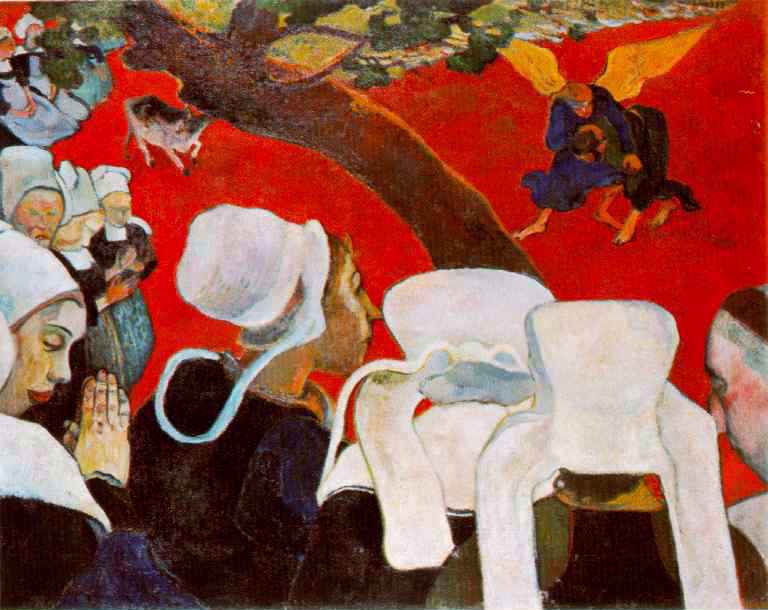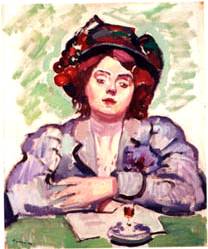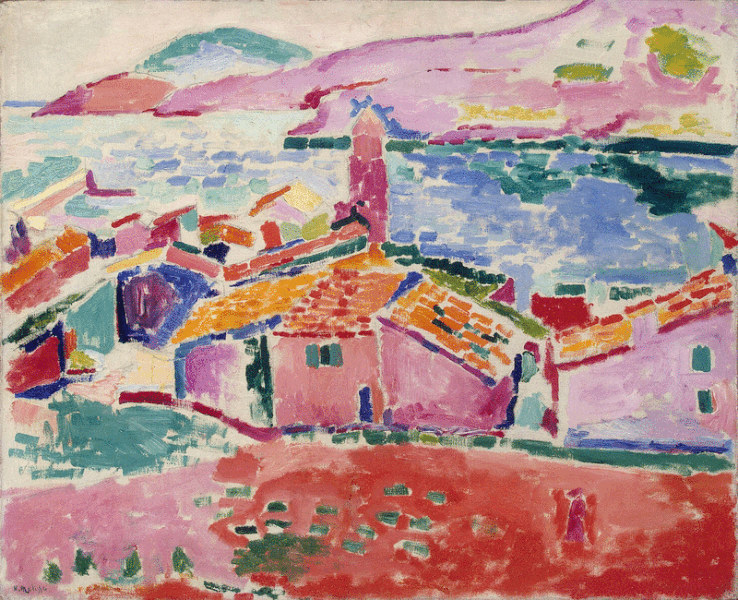 |
| Vision after the Sermon Paul Gauguin |
Besides Matisse and Derain, other artists included Albert Marquet, Charles Camoin, Louis Valtat, the Belgian painter Henri Evenepoel, Maurice Marinot, Jean Puy, Maurice de Vlaminck, Henri Manguin, Raoul Dufy, Othon Friesz, Georges Rouault, the Dutch painter Kees van Dongen, the Swiss painter Alice Bailly, and Georges Braque (subsequently Picasso's partner in Cubism).
| Harlequin and Pierrot André Derain |
The paintings of the Fauves were characterised by seemingly wild brush work and strident colours, while their subject matter had a high degree of simplification and abstraction. Fauvism can be classified as an extreme development of Van Gogh's Post-Impressionism fused with the pointillism of Seurat and other Neo-Impressionistpainters, in particular Paul Signac. Other key influences were Paul Cézanne and Paul Gauguin, whose employment of areas of saturated colour—notably in paintings from Tahiti—strongly influenced Derain's work at Collioure in 1905.
 |
| La Petite Lina Charles Camoin |
Fauvism was not a formal movement with a manifesto of rules and regulations. It was more an instinctive coming together of artists who wished to express themselves by using bold colours, simplified drawing and expressive brushwork. 'Les Fauves' simply believed that colour had a spiritual quality which linked directly to your emotions and they loved to use it at the highest possible pitch.
Within a few years, Fauvist techniques were adopted and developed by the German Expressionists and their various splinter groups. Fauvism was gradually subsumed into the canon of modern art, but its influence liberated the use of colour for future generations of artists, who ultimately explored colour as an abstract subject in its own right.

Hiç yorum yok:
Yorum Gönder